All you need to know about Email Deliverability: Common issues and Best advices
As marketers, we spend hours preparing every aspect of an email marketing campaign, designing flawless copy and obsessing over fonts, colors, and spacing. We’re talking about the customer personas, target markets, and personalized messages. We create emails from scratch, or lovingly change models to get our best foot in the way of our email campaigns.
For all the blood, sweat, and tears that go into our newsletters, there’s nothing more heartbreaking than finding out that the message never made it to the subscriber inbox. No matter how carefully you prepare your campaign, if your email doesn’t hit the inbox, you won’t delight your subscribers or see ROI. In this article, I will explain everything you need to know about email deliverability and how you can make sure that your emails can reach your audience’s inbox.
What is email deliverability?
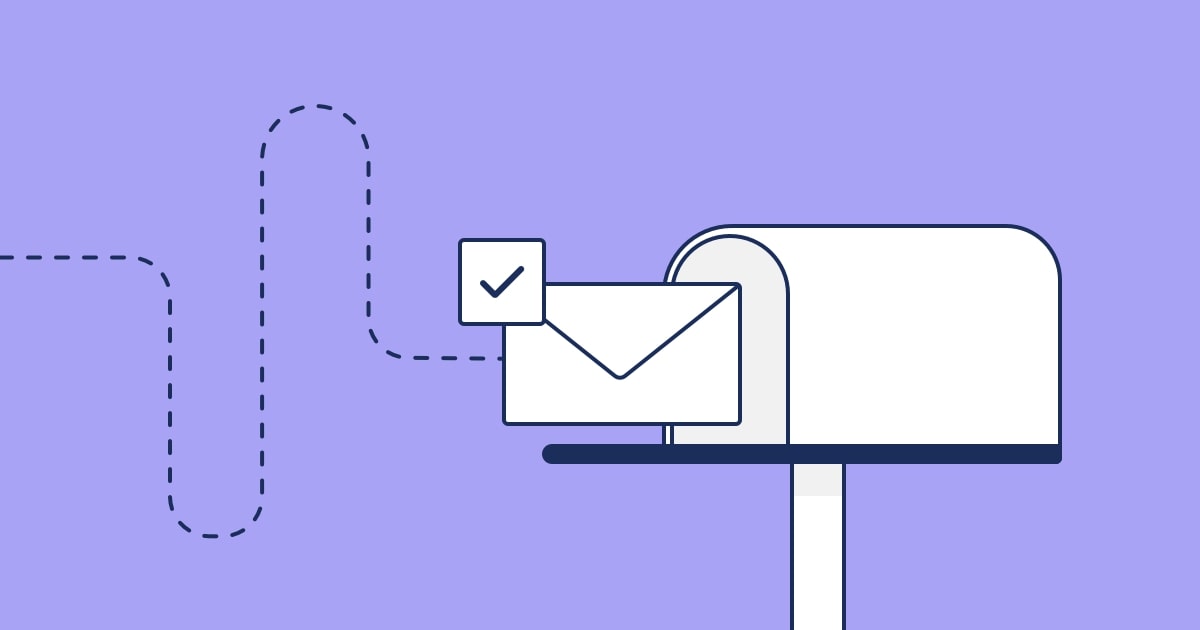
Email deliverability is when an email is successfully delivered to the recipient’s inbox. This is not to be confused with email delivery, which actually means that an email has been sent successfully to the recipient’s server. It’s possible to have amazing email delivery and bad email delivery at the same time, it’s just that all your emails are in the spam folder instead of the inbox.
Why is it vital to track email deliverability?
Monitoring email deliverability is important for several reasons:
-
To know whether your subscribers have received your emails. Via tracking email deliverability, you can know the people who opened their emails and the time they opened them. Marketers may gain valuable insights over time; for example, figure out the most active subscribers on their list and find out the factors that improve interaction.
-
To decide whether or not a lead is “hot.” Tracking deliverability helps marketers recognize the most potential leads and those who need to be nurtured. The “hot” then can be given to the sales team, and the “warm” ones keep being nurtured by the marketing team.
-
Identifying referrals. Referrals provide more confidence for the prospective customer to reach out. By monitoring email deliverability, you can recognize both former and current customers who voucher for them and then set out to sell services or goods that cater to such customers just as they did to their previous customers.
-
To identify what’s wrong. Tracking email deliverability helps you understand the causes of unsubscription. For example, if there is a sudden rise in the number of unsubscribes, tracking the email campaign will enable you to discover common causes such as broken links, issues with email content, and so on.
-
To assess whether your content is working. Email deliverability monitoring allows you to consider how recipients communicate with your marketing materials, and hence whether your emails are performing well.
What influences email deliverability?
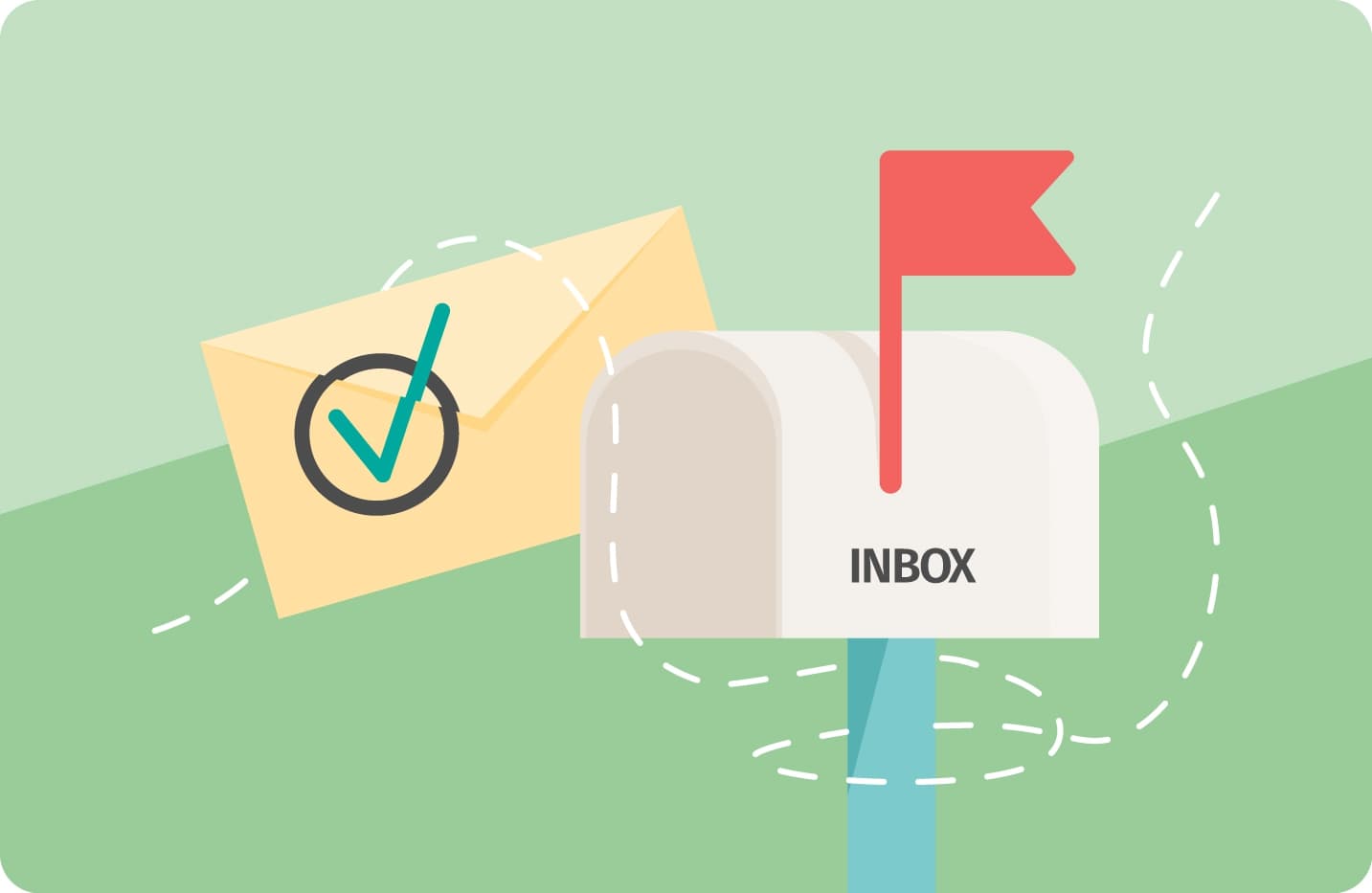
Email deliverability is influenced by identification, sender reputation, and infrastructure. Let’s speak about each of these variables.
Sender identification
This describes a series of protocols that show you who you are when you send emails, such as the SPF (Sender Policy Framework), DKIM (DomainKeys Identified Mail ), and DMARC (Domain-Based Message Authentication, Reporting, and Conformance). Any of these systems act as a passport, license or background check. Are you Jane Doe, a New York lawyer? Or Jane Doe, a swim coach from Southern California?
Sender reputation
Whenever you send email promotions, mailbox providers conduct credibility tests. Senders with an outstanding email reputation will have their messages sent to recipients’ inboxes, whereas those with a bad reputation will land in the spam folder, or even be rejected at the gateway.
Your sender’s credibility is a ranking that shows how trustworthy your emails are. Every company and Internet Service Provider ( ISP) has different ways to score for you, but attracting positive actions from subscribers (which means subscribers refer to you as a trustworthy sender) is the best way to improve the sender’s reputation. Here are a few things that you should do:
- Send emails on a consistent schedule based on your subscribers’ preferences.
- Maintain a clean email list to minimize bounce rates.
- Avoid being sent to the spam box.
Infrastructure
Email infrastructure is a system built to process the delivery of all newsletters or transactional emails you send to your subscribers. While there are other components, email infrastructure is typically represented mainly by IP addresses.
Establishing and maintaining your email campaign infrastructure can be challenging and costly. It is also best to use an email service provider to control the entire operation for convenience. Choosing an email service provider with a reliable IP address is crucial. It means that your reputation as a sender depends only on your actions. So, the risk of slipping into the spam folder is reduced greatly.
In a nutshell, Identification and sender reputation account for much of the reason why email falls in either the inbox or spam folder. Think about this as waiting in line for an airport security search. If you don’t have a ticket, you’re not going to make it past the first desk. And if you’re on the no-flying list, then you’re not going anywhere.
Deliverability problems suggest that your sending and permission practices may be out of date, may not be legal, or your subscribers may be not interested in your content. If you were a little concerned about these descriptions, don’t worry. In the next segment, I’m going to talk about what you can do to boost your email deliverability.
Common issues with email deliverability

Negative Sender Reputation
Maintaining a good sender image is key to the success of your email program. The reputation of the sender is an indicator of the reliability of the IP address and domain of the sender. Mailbox providers take into account different metrics to assess the sender’s credibility, including spam complaints, mailing to unknown customers, industry blacklists, and more.
High Complaint Rates
The trick to email marketing is to ensure that you send relevant emails to people who want to receive them. If you don’t, then you’re opening up for a subscriber’s complaint. And the more complaints you get, the worse your email deliverability is going to be. Holding the subscriber complaint rate low is key to maintaining a good sender reputation and high deliverability rates.
Getting Listed on a Blacklist
There are whitelists, and, of course, dreaded blacklists in the email world. A blacklist is a list of IP addresses or/and domains that have been identified as “known” spam sources. They are open to the public and exist to help mailbox providers protect their users from unwanted emails. If your practices or content appear to be spammy, you will end up getting blacklisted, regardless of whether or not you are a legitimate, permission-based sender.
Poor List Quality
Maintaining a high-quality list of subscribers is crucial to ensure that your emails are sent to the inbox rather than the junk or spam folder. In addition to receiver complaints, there are three other big guilty parties of bad list quality: spam traps, unknown emails and invalid emails.
- Spam traps are email addresses that do not belong to active users and are used to classify spammers and senders with poor email acquisition practices.
- An unknown email is one that has never existed, has been terminated by the email service provider, or has been abandoned by its last owner.
- Inactive emails are customers in your list file who have not opened, clicked, or taken some kind of action for a considerable period of time.
Lack of Email Authentication
Authentication enables the sender’s identity to be checked by the recipient of the email and the mailbox provider. If the sender’s identity can not be authenticated, mailbox providers will reject the message or use additional filters to decide whether it should be delivered.
How to Improve Email Deliverability

Here are some of the best practices to ensure that your messages are delivered to subscribers’ inboxes.
Keep a clean email list
Even though permission-based marketing is necessary, permission can expire when it comes to emails. A large number of inactive subscribers can have a dramatic effect on your ability to perform because they hurt your engagement metrics. Consider deleting or suppressing inactive customers after a specified period of time or automating a re-engagement campaign.
If you have problems with deliverability, your list can contain spam traps that look like real email addresses but are used to recognize spammers. Sending to one can suggest poor list hygiene or spammy acquisition activities, such as buying/renting lists or scraping email addresses out of the internet. Removing invalid emails on a regular basis and re-confirming your inactive subscribers can help to clean up your list.
Provide easy unsubscribe options
It’s a common misconception that unsubscribing is a bad sign, but there’s no proof to show that unsubscribing rates impact deliverability. Actually, it will help if you improve your subscriber interaction and clean up your email list.
Sending targeted campaigns to people who truly want to receive your emails will help increase opens and clicks and reduce bounce rates. But, if users want to unsubscribe, make it easy for them to do so. It can be as easy as adding a link button to the bottom of your emails, like this example:
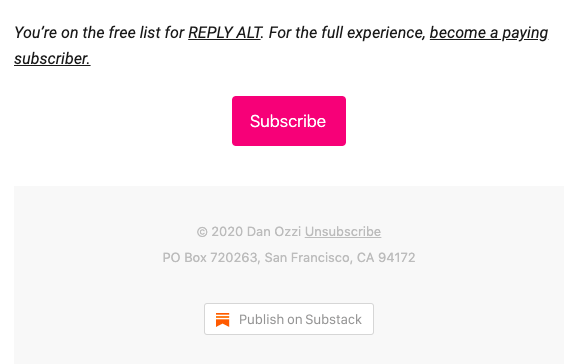
Don’t try to hide the unsubscribe button. Make it easy to find your email, whether it’s at the top or the bottom. Make the unsubscribe process quick in just one step — otherwise, you’re going to have a losing battle against the hurtful “report as spam” flag.
Make your emails personal
Marketers and subscribers tend to define spam differently. Subscribers do not care about spam filters or algorithms, but about relevance. Are you providing content that matters to them?
At the end of the day, this is the most important question to ask yourself before you click “send” on every email, so make sure to read your copy for errors and relevance. Email is one of the most personal platforms when it comes to marketing. Sending emails that connect with your audience and leveraging the one-to-one communication nature of the medium will not only have a positive impact on your deliverability — it will also improve reader interaction and create stronger relationships with your audience.
Add engaging text to emails
When you create your emails, make sure the subject line is appealing to the reader. Subject lines create the first impression in your emails, so are they eye-catching and intriguing, like these examples?

Your email subscribers are likely to be interested in your brand, so your email experience should be as pleasant as anything else that your customers love. Odds are, you’ve got a pretty good understanding of the language that makes your customers feel connected with your brand. To keep them engaged, that language should be maintained in your emails — showing readers that you care about listening to their needs beyond promotions and sales.
Whitelisting
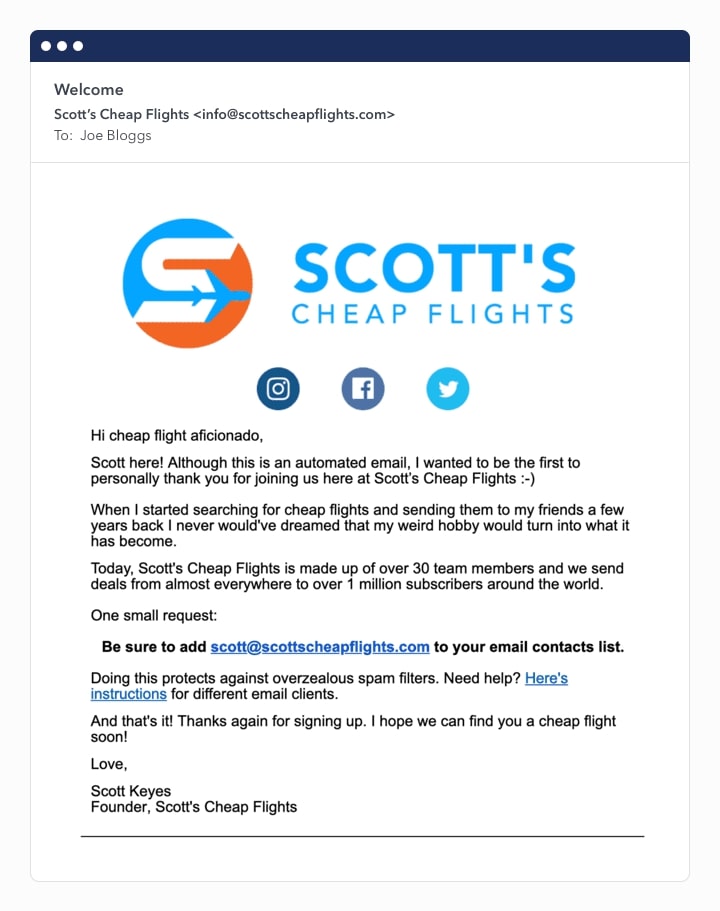
Whitelisting is simply adding an email to your list of contacts. This communicates to the inbox filters that this email address is a trusted source. You can ask subscribers to whitelist you, which will help boost email deliverability. The ideal way to get a whitelist is to create a workflow in your email campaign. It can be like this: “You’re getting this email because you’ve opted in via our website. Make sure you keep these emails coming by whitelisting us!” Remember, the request to be whitelisted is a big favour, so make sure you reserve it only for your most potential subscribers.
Avoid using spam words
As we’ve collected from this guide so far, inbox filters are the seemingly omniscient blockers of your email programs. And they are extremely vulnerable to spam trigger words that will reroute your well-intentioned emails away from the inbox.
Avoiding using spam trigger words can help your email deliverability, and there are what you should avoid:
- Do not use all caps, exclamation marks, and red fonts.
- Use a secure and reliable email service provider
- Don’t attach any files in your emails
Consider email frequency
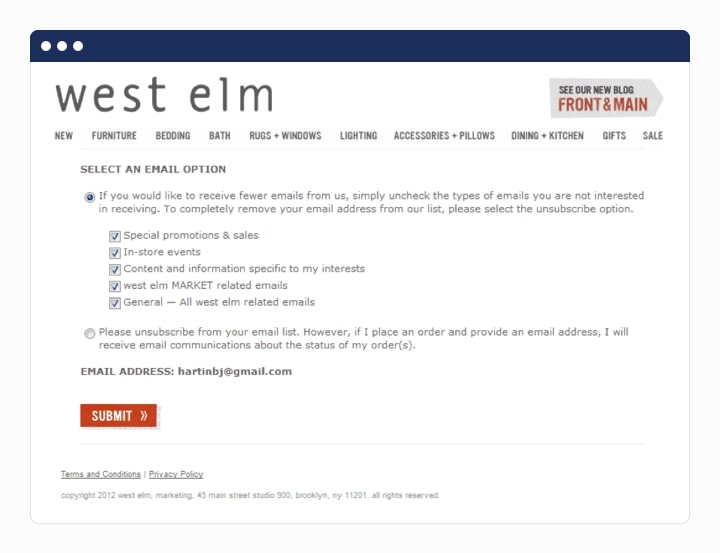
To boost email deliverability, it’s best to avoid irritating your subscribers by sending too many emails too frequently. As it turns out, there’s a sweet spot when it comes to the number of emails you should send out.
Although data points to the ideal send frequency once every two weeks, it is by no means a science. So to decide the perfect email cadence, which is the timing and types of emails you should send to your subscribers, you can try out the following tips:
- Know who the audience is and appreciate their buying journey.
- Survey your audience to understand how to segment your list based on their preferences.
- Set up frequency preferences and let your audience choose theirs.
Warm-up your domain
If you’ve just stepped your foot into email marketing and just started sending email emails, then you should take the time to “warm up” your domain. Also known as IP or reputation warming, this is a way to boost your reputation profile when you just get started. Ideally, the list should be small and active at the beginning.
The reason is that engagement, such as opens, clicks, and responses, are all a good sign of credibility – so a smaller list of more engaged recipients will give you a greater ratio of active, interested parties.
If you kick things off with a 10,000 blast of email to people who have never heard of you, your deliverability is going to be bad, and you’re going to risk ruining your reputation. Instead, take the list of 10,000 contacts and break it down.
- Week 1: emailing to 250 recipients
- Week 2: emailing to 500 recipients
- Week 3: emailing to 750 recipients
- Week 4: emailing to 1300 recipients, and so on.
Final Words
That’s it! I hope that this article has provided you with valuable information about email deliverability. Please feel free to leave comments below for further discussion on this topic.
New Posts






